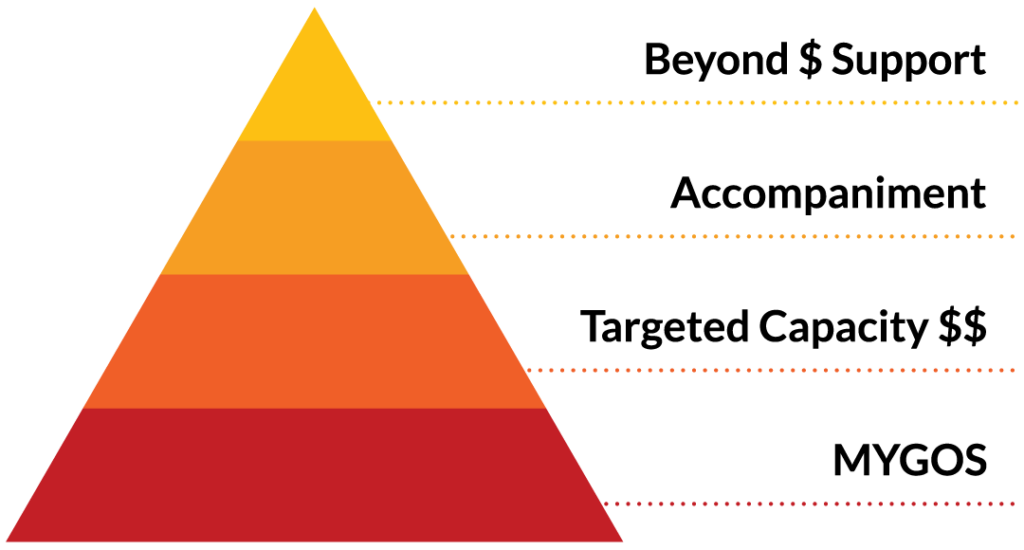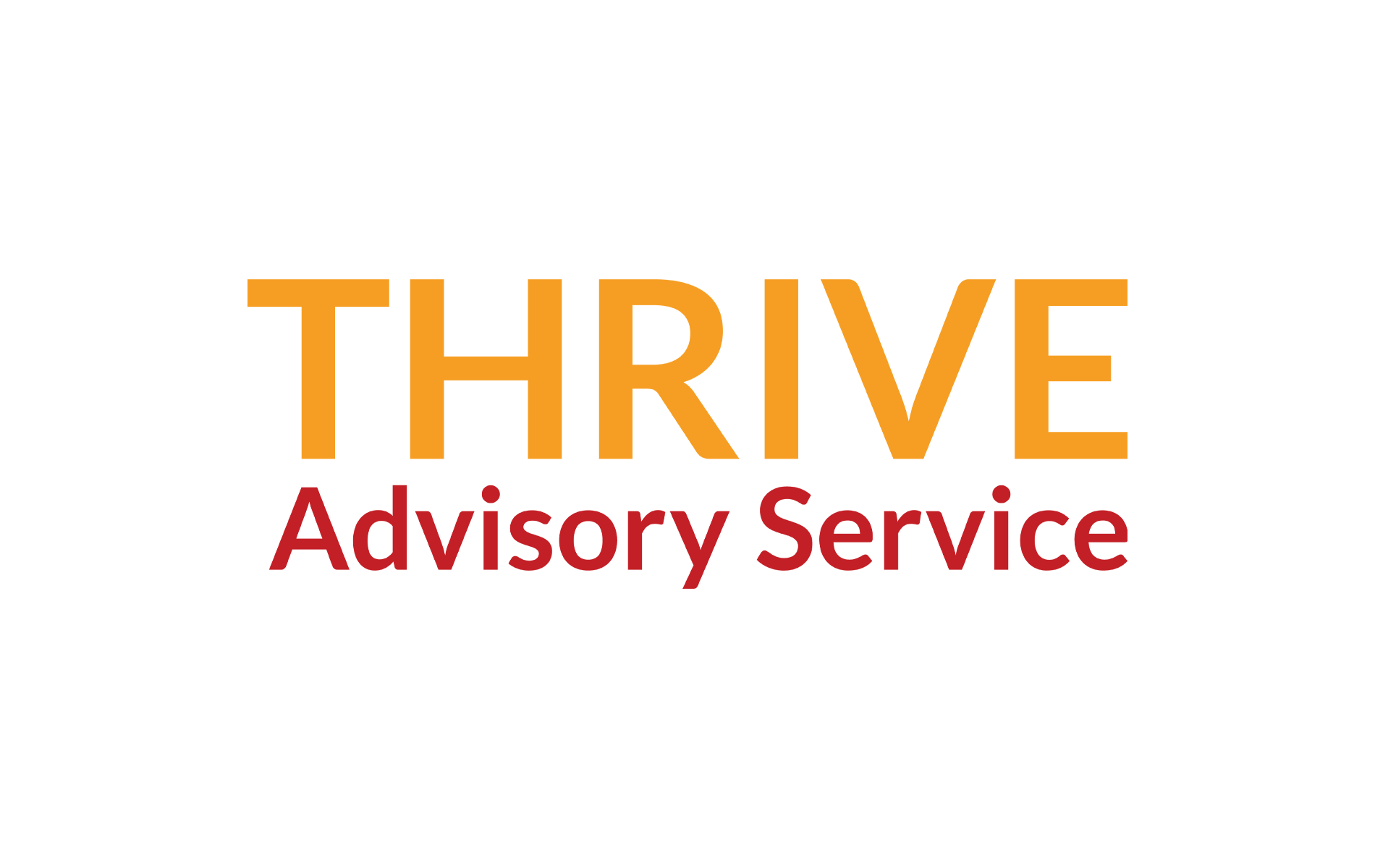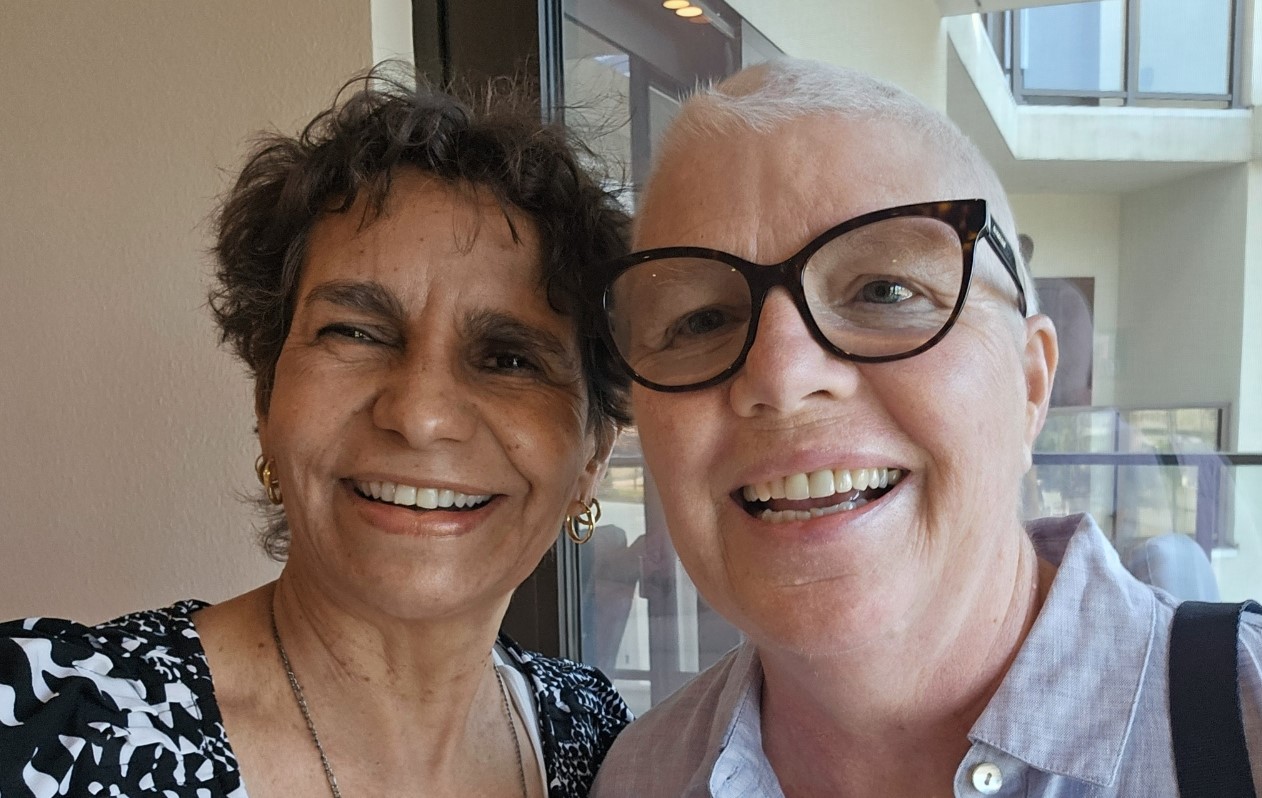Traditionally, capacity support has been provided primarily through grants. Yet there are other powerful moves that foundations can make to help strengthen their grantee partners’ capacity and ability to thrive. Here we outline four main forms that this support can take, each of which builds on the last.
- Multi-Year General Operating Support Grants (MYGOS)
Let us say it loud and clear: MYGOS grants strengthen organizational capacity. Leaders say, and we believe, that the first and most powerful way to support an organization to strengthen itself is to provide multiple-year commitments of unrestricted funding where organizations have full rein to allocate the resources where they are most needed. A “runner-up” strategy is multi-year support for specific programs (e.g., “for activities related to advancing equality for LGBTQ groups”) where the organizations are not obliged to allocate the funds to specific line items.
And by “multi-year,” we don’t mean a single two-year grant, we mean commitments of support that are offered over four, five, six or more years. When an organization can count on such annual support (ideally from multiple sources) their ability to plan and deliver on mission leaps to a whole other level, and for leaders, it frees more of their time away from fundraising and toward the many other duties of leadership.
Despite the many strong cases that have been made for the programmatic and capacity results that MYGOS funding can deliver, many funders still feel that they need to tie their grants to specific activities and expenditures in order to ensure that grantees stay accountable to delivering on mutually agreed-upon projects and outcomes. We reject the premise that trust-based approaches are antithetical to results and rigor, and will say more about this important topic in a future post.
- Targeted Funding Specifically for Capacity Strengthening
While some might believe that unrestricted funding is all that is needed, we would argue that it is vital and fundamental, but still insufficient. Again and again, we have heard from leaders that they have found it hard to allocate hard-earned grant funds to their own capacity and sustainability. Whether because of the perceived and real pressure from their board and funders to put every dollar to program, or because of a sector-wide inclination towards scarcity and underfunding, it is difficult for many to justify or carve out the money for investing in themselves or their staff.
For these reasons, it is profoundly helpful to leaders when funders complement their core grants with additional funding that can only be used to underwrite the costs of capacity-strengthening, particularly when those funds are provided in keeping with the trust-based principles we have outlined in What Does Trust-based Capacity-Strengthening Funding Look and Feel Like? For the relatively small number of organizations that have received both MYGOS and capacity funds, the results are substantial. As CEP’s research shows:
“The overwhelming majority of nonprofit leaders (82 percent) who have received capacity building support as a complement to a multiyear GOS grant found it very or extremely helpful, describing it as helping them invest in and strengthen their organizations. They say that this combination of supports helped them plan for the future, focus on their work, and invest in staff while making targeted improvements. And, as one leader noted, ‘[without] having to divert funding support from the core work.’ Leaders describe strengthening operations, planning, fundraising, raised communications capacities, investing in staff professional development, and improving their DEI efforts.”
- Accompaniment and Thought Partnership
“Powerful capacity-strengthening support is based on a long-term commitment, guided by the priorities of the organizations, plentifully resourced and thoughtfully accompanied.
— Funder
Having the opportunity to invest in their own capacity remains a rare luxury for many organizations, such that they may have limited experience in thinking through the range of options for how those funds could help them. The result can sometimes be that they allocate resources to their most pressing presenting need (often fundraising) rather than the most important one. Or they may identify what they want to work on, but are still stumped about what kind of support and consulting would be most valuable and who they might want to engage.
This is why LeadersTrust made “Capacity Coaches” a key ingredient of the model. We have seen first-hand how the value of capacity-strengthening funding is enhanced when organizations have no-cost access to an experienced organizational development practitioner who “accompanies” the leaders and their teams in planning and implementing capacity-strengthening initiatives. In this role, the practitioners serve as thought-partners, guides, coaches and facilitators to leaders and their teams. The 5-year evaluation of the Haas Jr. Fund’s Flexible Leadership Awards identified accompaniment as a key ingredient contributing to participating organizations’ growth and programmatic achievements.
- Capacity Support That Extends Beyond the Grant
The fourth strong move that a funder can make is to organize and offer to their grantees a range of easy-to-access training opportunities, short-term coaching, peer learning, convenings, retreats, free conference space, and other “beyond the grant” supports. Although such resources abound, it is often hard for organizations to pay for them and/or even to find the time to research and identify which ones they want. Funders are well-positioned to take some of that task off the shoulders of organizations by offering both a) practical resources to address the full range of questions that arise around organizational operations, strategy and culture, and b) opportunities for leaders to engage those resources in the company of peers across other organizations.

Individually, each of these four approaches has value. And they build on each other, so when offered together that value is greater. Of course, not every foundation will be able to provide every one of these, but they can perhaps offer two or three of them in combination — or they might coordinate their offerings in partnership with their foundation peers, so that together they make the full range available to shared grantees. The result would be a valuable menu of capacity-strengthening resources that set up their organization partners for success.

